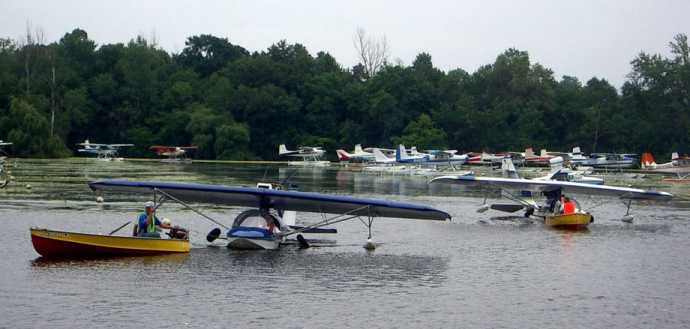
He also had two other gizmos that were useful: His depth finder told us we were approaching the shore long before we came close, so we were never in danger of running aground. And he used the marine-band radio in the canal to ask a boat driver to slow down so we could keep up in displacement mode where the swells were still in effect. He also used it to talk with a couple of marinas, asking about ramps and docks.
I've since acquired a marine radio, but am still not likely
to get a ham license, even though you no longer have to learn Morse. A
depth finder? Hmmm...
A CAVEAT ABOUT THIS ADVENTURE: I don't want to seem to be recommending this kind of flying (and boating), and as I said above, I wouldn't have set out on it by myself. It was "The Viking's" experience and equipment that made it all go so smoothly.
On the other hand, I now know that, with proper preparation, a SeaRey is capable of doing a lot more than putting around over a lake or river on a clear, calm day. It really is a pretty good boat in open water, and boating is a lot safer than flying when the visibility goes down.
So one of the lessons of this adventure, for me at least, is that the third SeaRey mode--floating--is important to keep in mind.
It's a matter of mind-set: My tendency was to think of it as an airplane first and second as a car. But if anything it's inherently a boat first. And realizing that has radically changed the way I think about flying it.